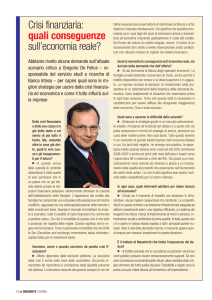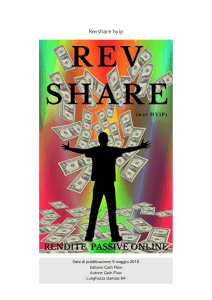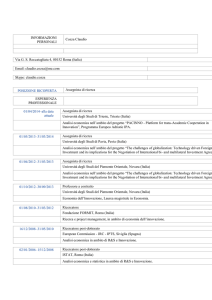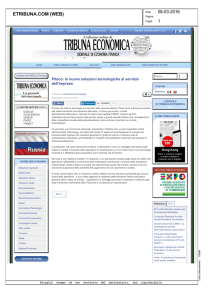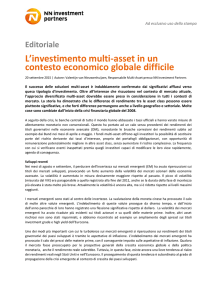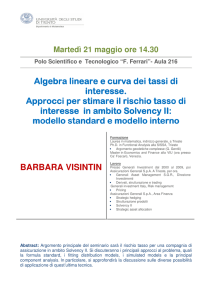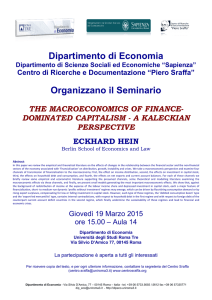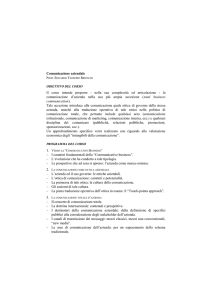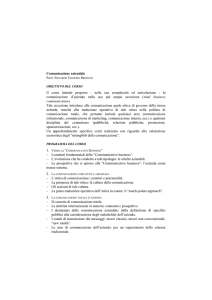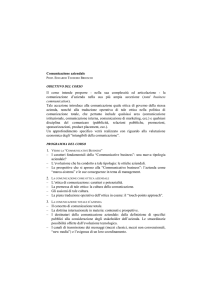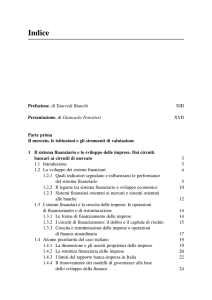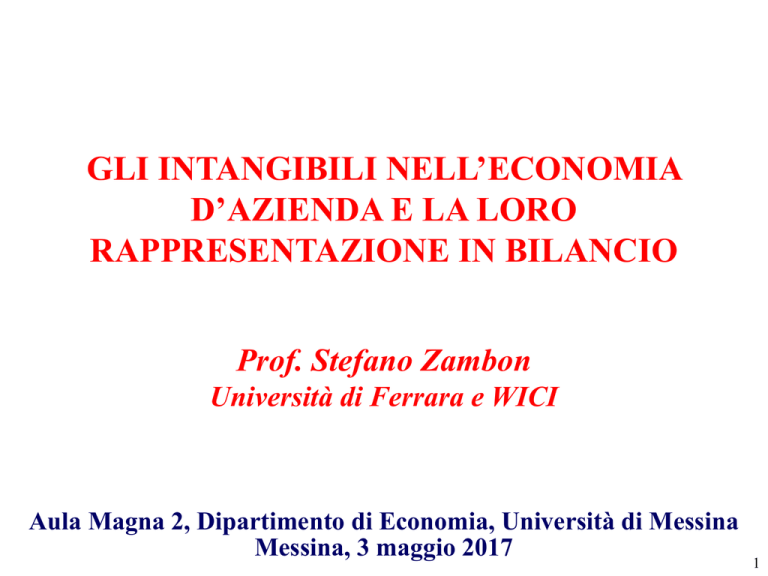
GLI INTANGIBILI NELL’ECONOMIA
D’AZIENDA E LA LORO
RAPPRESENTAZIONE IN BILANCIO
Prof. Stefano Zambon
Università di Ferrara e WICI
Aula Magna 2, Dipartimento di Economia, Università di Messina
Messina, 3 maggio 2017
1
BALANCE SHEET ON JANUARY 31, 1399
BALANCE SHEET ON JANUARY 31, 1399
STATEMENT OF PROFIT and LOSS,
JULY 11, 1397 – JANUARY 31, 1399
“The substantial foundation of the
industrial corporation is its immaterial
assets”
Thorstein Veblen, 1904
The Intangibles-Tangible Widening Gap
The Intangibles Revolution: U.S. Private Sector Investment in Tangible and
Intangible Capital (relative to Gross Value Added), 1977-2014
16%
Intangible investment rate
14%
12%
10%
8%
Tangible investment rate
6%
Intangible investment rate
Tangible investment rate
4%
1977
1982
1987
1992
1997
2002
2007
2012
Source: Carol Corrado & Charles R. Hulten
Intangible investment dominates
£ billion
nominal
UK Market Sector investment
250
200
150
Intangible
Tangible
100
50
0
1990
1995
2000
2005
2010
2011
Knowledge investment by firms for future returns:
- Software, Creative works, R&D, Designs, Business organisation / processes, Workplace skills, Reputation / brands
Source; UK Investment in Intangible Assets and IPRs, Haskel et al., 2014
Value is more than financial
Source: OCEAN TOMO LLC
January,1,2015
Valore
di mercato
Capitale
finanziario
Capitale
intellettuale
Capitale
umano
Capitale
strutturale
Capitale
di clienti
Cultura
Capitale
organizzativo
Capitale
di innovazione
Proprietà
intellettuali
Capitale
di processi
Beni
intangibili
Fonte: Intellectual Capital Report, Skandia, 1998.
La disaggregazione del valore di mercato

